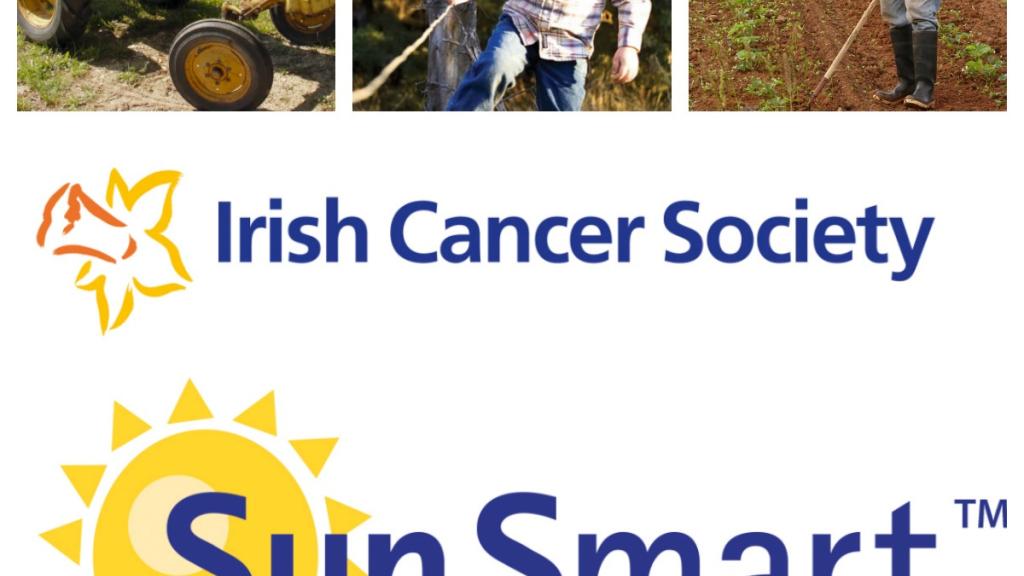
SunSmart advice for farmers and outdoor workers
The main cause of skin cancer is harmful ultra violet (UV) rays from the sun. UV rays can be harmful from April to September, from 11 am in the morning until 3 pm in the afternoon. UV rays can be present on both sunny as well as cool and cloudy days.
Outdoor workers (farmers, construction workers, gardeners, fisherman etc), who spend most of their time outdoors are at risk of skin cancer.
[[{"fid":"8025","view_mode":"default","fields":{"format":"default","field_file_image_alt_text[und][0][value]":"Construction workers working outside against the sunset","field_file_image_title_text[und][0][value]":false},"link_text":null,"type":"media","field_deltas":{"2":{"format":"default","field_file_image_alt_text[und][0][value]":"Construction workers working outside against the sunset","field_file_image_title_text[und][0][value]":false}},"attributes":{"alt":"Construction workers working outside against the sunset","class":"media-element file-default","data-delta":"2"}}]]
Whether it is sunny or cloudy, it’s important to protect your skin from April to September as you cannot see or feel the UV rays which cause damage to the skin. Up to 90% of UV rays can get through light cloud and it doesn’t have to be a warm and sunny day for dangerous UV rays to be present. Even on cool days UV levels can be high enough to damage skin.
Follow the Irish Cancer Society’s SunSmart Code to stay safe in the sun and reduce their risk of developing skin cancer:
Seek shade. When UV rays are at their strongest – generally between 11 am and 3 pm.
Cover up. By wearing a shirt with a collar and long shorts. Also wear a hat that gives shade to your face, neck and ears.
Wear wraparound sunglasses. Make sure they give UV protection.
Slop on sunscreen. Use sunscreen with SPF minimum 30 UVA protection (higher for children), 20 minutes before going outside and re-apply every two hours – more often if swimming or perspiring.
Check the UV index – www.cancer.ie/uvindex.
Keep babies under six months out of the sun.
Who is at risk?
We all need to take care of our skin. Outdoor workers (farmers, construction workers, gardeners, fisherman etc) who spend most of their time working or playing outdoors, have a higher than average risk of skin cancer. Follow the SunSmart Code to reduce the risk.
[[{"fid":"8026","view_mode":"default","fields":{"format":"default","field_file_image_alt_text[und][0][value]":"Farmer with calf","field_file_image_title_text[und][0][value]":false},"link_text":null,"type":"media","field_deltas":{"3":{"format":"default","field_file_image_alt_text[und][0][value]":"Farmer with calf","field_file_image_title_text[und][0][value]":false}},"attributes":{"alt":"Farmer with calf","class":"media-element file-default","data-delta":"3"}}]]
Take extra care if you:
- Have pale or freckled skin that does not tan or burns before it tans.
- Have naturally red or fair hair.
- Have blue, green or grey eyes.
- Have a large number of moles (50 or more).
- Burn easily or have a history of sunburn.
- Have already had skin cancer.
- Have a close family member who has or had skin cancer.
SunSmart farm kids – Why bother?
While skin cancer is very rare in children less than 15 years old, children’s skin is more sensitive to damage from the sun’s UV rays than adult’s skin. Sun exposure in childhood and adolescence sets the stage for skin cancer in later life.
For this reason it is important to:
- Keep babies under six months in the shade.
- Keep older children safe by following the SunSmart Code.
Chemicals used on the farm and skin cancer risk
Some chemicals that are used on the farm, such as creosote, make your skin more sensitive to UV rays. If used incorrectly they can lead to sun burn which increases your risk of skin cancer.
Make sure you read safety instructions before using any chemicals on the farm.
Organising your day
[[{"fid":"8027","view_mode":"default","fields":{"format":"default","field_file_image_alt_text[und][0][value]":"Farmer sitting on tractor","field_file_image_title_text[und][0][value]":false},"link_text":null,"type":"media","field_deltas":{"4":{"format":"default","field_file_image_alt_text[und][0][value]":"Farmer sitting on tractor","field_file_image_title_text[und][0][value]":false}},"attributes":{"alt":"Farmer sitting on tractor","class":"media-element file-default","data-delta":"4"}}]]
To reduce your risk of skin damage when on the farm organise your day around the sun’s UV rays. To do this:
- Plan your jobs so that you are in the shade when UV rays are strongest – from 11 am to 3 pm.
- Check the UV Index every day to help you plan to protect your skin from UV damage.
- Take extra care around midday.
About the UV Index
The higher the UV Index the greater the chance of damage to your skin and eyes.
[[{"type":"media","view_mode":"media_large","fid":"5956","field_deltas":{"1":{}},"link_text":null,"fields":{},"attributes":{"alt":"The UV Index from 1 to 8","height":"116","width":"300","style":"width: 300px; height: 116px;","class":"media-image media-element file-media-large","data-delta":"1"}}]]
If the UV Index is 3 or more it is necessary to follow the SunSmart Code.
Be Smart - Protect your skin when at work
The Irish Cancer Society the Irish Farmers’ Association (IFA) and the Construction Industry Federation have joined forces to remind farmers, construction workers and all outdoor workers of the importance of protecting their skin to reduce the risk of skin cancer.
The Society and the IFA have a leaflet Be Smart – Protect Your Skin on the Farm which is available online and will be distributed to farm families over the summer months.
The Society and the Construction Industry Federation have a leaflet Be Smart – Protect Your Skin on Building Sites which will be distributed to building sites over the summer months.
These leaflets contains useful information on how to protect your skin when outdoors.
We also have a poster to highlight the risk of skin cancer for outdoor workers Outdoor Workers poster
Read next: Myths about the sun and skin care debunked.
